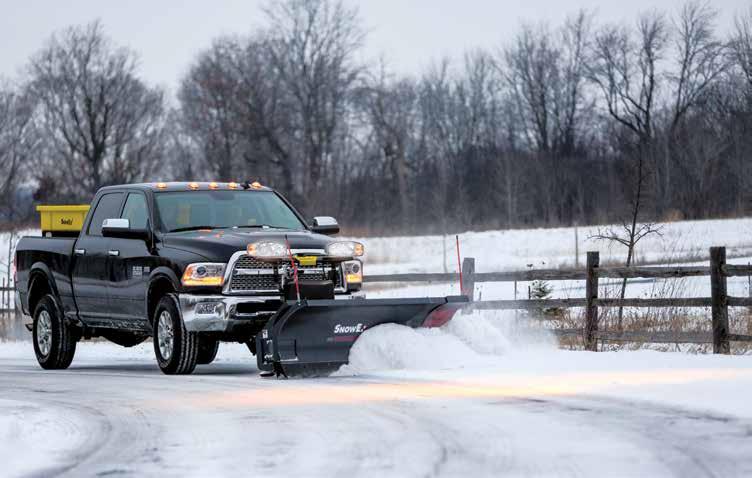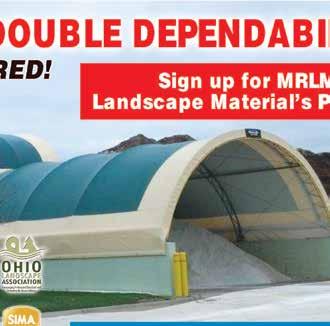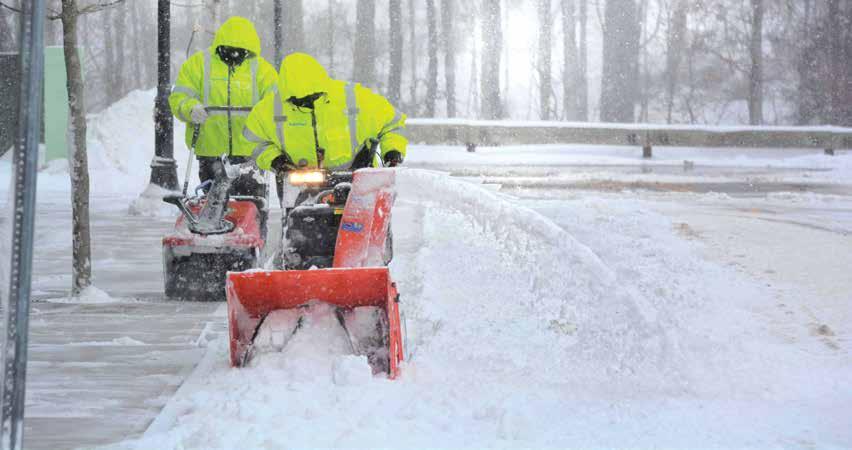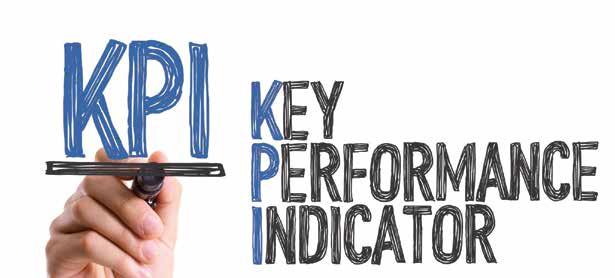
7 minute read
FOR SAFETY SAKE
SAFETY CULTURE FOR THE WINTER OF 2020-2021

Advertisement
We’ve made it to the winter seasons of 2020, so let us look at some safety practices to get us through this period of cold, through the eyes of a Safety Culture program. By now, all us should have a strong focus on our Culture of Safety – the attitudes, beliefs and work practices an organization maintains towards safe work conditions. It equates to the positive application of safety standards within your company. The winter months pose the usual workplace safety concerns, but it’s always pertinent to review your company operations and the safety protocols in place.
The OSHA General Duty Clause relies on each employer to furnish to each of its employees employment, and a place of employment, which are free from recognized hazards that are causing, or are likely to cause death or serious physical harm to its employees. Although there are no Federal laws that specifically mandate training for your staff on winter safety, the exposures and hazards that workers face during the colder months are covered by the General Duty Clause. For any employee who is required to work outdoors during the winter months, exposure to cold, foul weather and slippery conditions should be considered a “recognized hazard.” It is the employer’s duty to provide training and properly equip the staff to recognize and be protected from these winter hazards. Slip/Fall Hazards – Your staff should be required to wear proper footwear at all times. In colder months, your staff should be reminded to check the treads of their work boots/ shoes to help to prevent slips and falls on wet or icy surfaces. For work on extremely slippery surfaces, the use of cleats or slip-on grips may be needed. Your staff should also be reminded to take it slow and maintain a stable center-ofgravity when walking across slippery yards or parking lots. Office staff should be instructed to wear boots to and from their cars and change to office footwear once they arrive indoors. Slick conditions (ice, snow, leaves) should also be noted and corrected as soon as possible, and watch for areas that accumulate water and ice quickly. continued on page 20
SERVICE - SALES - PARTS OUTDOOR POWER EQUIPMENT Most makes and models
Al Pniewski & his son, Allen Jr., look forward to serving your winter equipment needs!

12126 York Rd., Unit A North Royalton, OH 44133 440.230.3807 www.A1power.us


Large selection of new machines year round


continued from page 18

Shoveling Snow – the physical demand of removing snow by hand can cause serious injury. Working out in the cold for extended periods, coupled with strenuous activities and overexertion, especially if a person does not exercise regularly, can result in a heart attack or other serious injuries. Warmup exercises before shoveling snow are recommended, as are frequent rest breaks to warm up and prevent dehydration. Stop shoveling if you experience shortness of breath, chest pain or any other signs of a heart attack. When manually removing snow, choose a shovel that has a comfortable grip and is the correct height and length of the user. Spacing your hands on the grip to increase leverage and pushing the snow, instead of lifting it will help to prevent back injuries.
Cold Stress – Anyone who is required to work outdoors, or in unheated or poorly heated garage bays and utility buildings, during the winter months is at risk of cold stress related injuries. All employees should be reminded to take the proper precautions. Proper dress (layers, avoid tight clothing), winter hats and gloves (no scarves near equipment), staying dry and hydrated are keys to avoiding cold stress.
Cold winter weather and wind chills force the body to work harder to maintain core temperature. (Wind Chill is the temperature that the body feels when air temperature and wind speed are combined.) Prolonged work in cold environments may drive down skin temperature and cause serious health problems, tissue damage and even death.
When faced with prolonged exposure to cold, the body strives to maintain core internal temperature, shifting blood flow away from the outer skin and extremities – hands, feet, arms and legs – to the chest and abdomen. This shift causes the skin and extremities to cool and may result in frostbite, hypothermia and a condition known as trench foot. Workers who have to work outdoors for extended periods should be provided with warming stations, or be allowed to take frequent breaks indoors. Warm, sweetened liquids – non-alcoholic, obviously – should be provided, as it is easier to become dehydrated in colder weather. Working in teams is recommended so that the staff can monitor each other for signs of cold stress.
Winter Driving – A majority of deaths and serious injuries during snow and ice conditions occur from vehicle accidents! Safe driving practices should be stressed with your employees throughout the entire year. However, during the winter season, when faced with hazardous road conditions that are not under your control, your drivers should be reminded of your safe driving policies regularly. Commercial Motor Vehicles require a pre-trip inspection prior to operation, and special attention to plow trucks is necessary. Drivers should be wearing proper reflective clothing in the event they have to leave their vehicle while on-route. A good vehicle maintenance program should be in place to ensure that all fluids are at proper levels, brakes and tires are in good condition and cooling, electrical and exhaust systems are functioning properly. Emergency notification equipment should also be available and maintained in the event of a vehicle breakdown.
Remember to take a look at your commencing winter operations and review the safety protocols for each. Confirm that employee attitudes and values benefit your safety culture through commitment to realistic safety practices for continuous organizational learning, improving hazard awareness and management for hazards shared across the workforce.



EVENT INFORMATION
DATE & LOCATION JANUARY 21, 2021
OLA WEBINAR
AGENDA OLA MEETING
3:00 PM TO 3:30 PM
PROGRAM
3:30 PM TO 5:00 PM
COST TO ATTEND
MEMBERS: NO CHARGE NON MEMBERS: $30
REGISTER TO ATTEND BY
JANUARY 14, 2021
SPONSORED BY PLATINUM SPONSOR
EMERALD SPONSOR
GOLD SPONSORS
KURTZ BROS., INC
SILVER SPONSOR
BRONZE SPONSOR OLA JANUARY MEETING Key Performance Indicators (KPI): Holding Owners & Managers Accountable
Due to current Covid-19 Social Distancing Guidlines, the OLA will be holding this year’s January Meeting live, via webinar, on January 21, 2021. Our special guest presenter for this meeting will be Kevin Kehoe, Founder of The Aspire Software Company.
Key Performance Indicators (KPI) are measurable values that demonstrate how effectively a company is achieving its objectives. Kevin will discuss what BOTH business owners and their managers should be looking for - outside of your standard financials. Both ‘groups’ should come away with a better understanding of these metrics and what to do with the information they learn from compiling them, including:
Three KPIs that Drive Net Profit How to Improve Upon Each KPI What KPIs are Measured for Which Key Positions What Roles Leadership & Management Play
NOTE: The start time for this event will be 3pm, instead of the normal 6pm start time.
GUEST SPEAKER
KEVIN KEHOE / FOUNDER OF THE ASPIRE SOFTWARE COMPANY Before launching The Aspire Software Company, Kevin was a nationally recognized consultant for more than 35 years, including 26 years in the landscape industry. He’s provided practical solutions, systems and advice to over 400 landscape contractors in the areas of sales management, financial management, budgeting, pricing and merger and acquisition – all with the goal of growth and profitability. He is known for his sales system and his benchmarking expertise.
ABOUT THE ASPIRE SOFTWARE COMPANY
In 2013 Aspire began building the best business software for landscape and snow companies. Since then, they have grown from a concept (a cloud-based software system for landscape contractors that is easy to use and robustly trained and supported) to a company with a long list of clients who trust them to run their business. Aspire combines the latest IT technology with an exceptional deployment, training and support experience. They’re focused on maximizing employee productivity while providing you with the processes, tools and information to drive down your job costs and drive up your revenue growth. And the best part? Industry best practices come standard. PRESENTED BY






